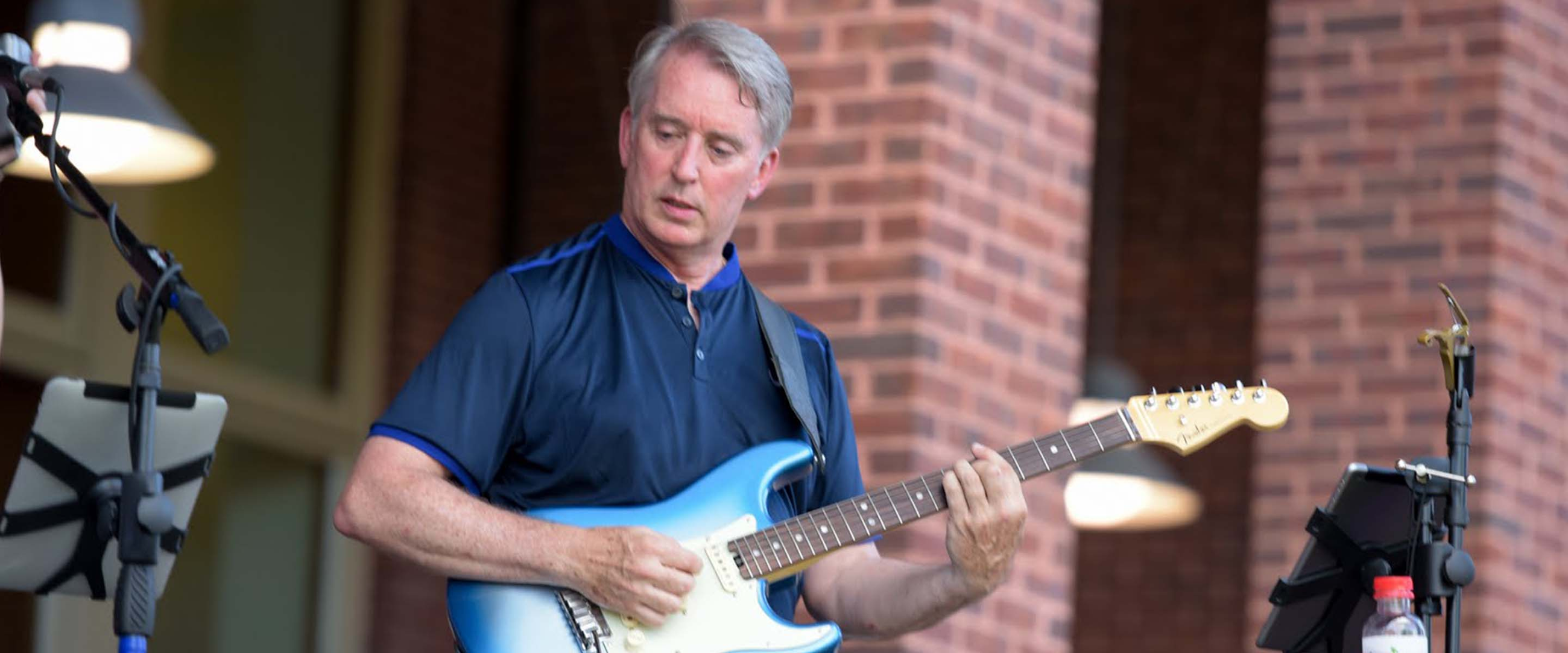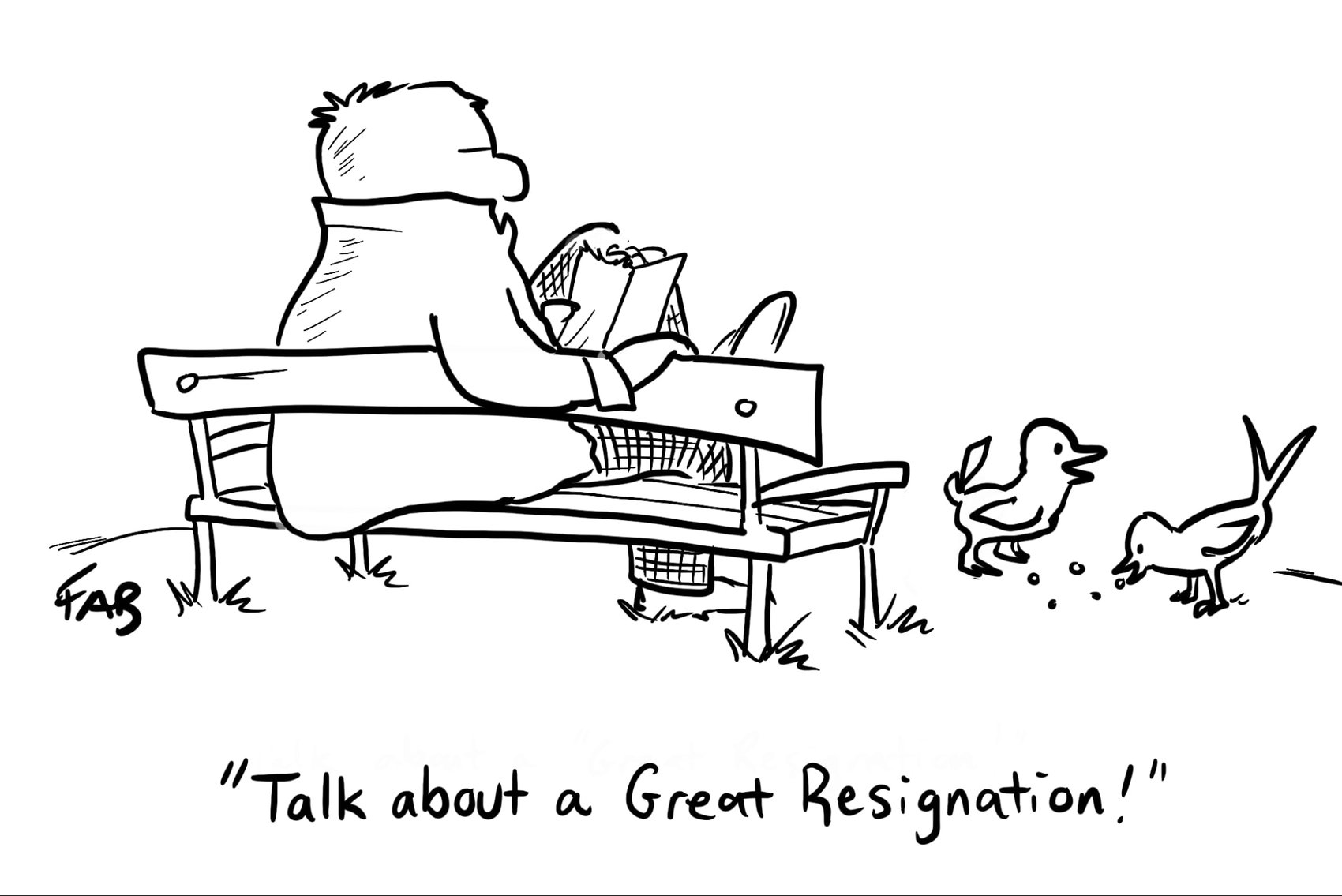Central States CIO Pat Moroney’s parting thoughts on transformation, cloud and feeding the pigeons

Jo Maitland
Editor, Transform with Google Cloud
CIOs are joining the masses in the Great Resignation. Central States Funds CIO Pat Moroney shares career highs and lows transforming IT
Corner office or not, everyone seemed to need a break after 2021. Just like everyone else who spent the last two years juggling work-life balance, CIOs are among those deciding to call it quits.
The following is a transcript of an interview with Patrick Moroney, former CIO at Central States Funds, a provider of health insurance and pensions to unionized workers, on the first day of his retirement. Central States Funds was one of the first not-for-profit labor health funds in the U.S. Moroney is also founder and president of the Technology Leaders Association, and vice-chair of non-profit icstars.org. He shares some career highs and lows transforming IT, finding the parallels between today’s digital transformation to cloud and transformations that have come before. He also has some great career advice for IT professionals shooting for the c-suite (don’t neglect your network). The following questions have been edited for clarity.
Q. How did you get your start in IT?
Patrick Moroney: My first IT role was as a programmer analyst, but I quickly realized that wasn’t for me. I am more comfortable leading and supervising a team. That role came at Monsanto, where I helped grow this tiny unit called NutraSweet from a $50m to $2bn business, helping them implement Digital’s all-in-one integrated email, calendaring and word processing environment across the organization. That was before email was really a thing and it was revolutionary for the company — how everybody could talk to each other — it picked up the speed of everything we were doing in a wonderful way. It got me known as the guy who could do these integrated suites.
Q. There’s a lot of talk of transformation these days. Looking back, are there any lessons you learned from past transformations you’ve been involved with that could be useful in today’s cloud era?
Patrick Moroney: At Monsanto, we had numerous solitary, unintegrated applications on mainframes like McCormack & Dodge and we put them on the ERP pathway so that all business functions could talk to each other. NutraSweet chose SAP … then Monsanto saw what we were doing and said how are you doing that in nine months? That was fast back then! And they took our model. They sucked senior leadership out of the business segments and made them part of a corporate shared service. I became part of the leadership group that led SAP implementations across the rest of the world for 35 Monsanto business units in 70 countries.
That SAP integration work aligned nicely with the then CEO Bob Shapiro’s vision to combine food, health and agriculture into a global life sciences powerhouse. I think today, the cloud gives us similar opportunities to leverage a shared service that we don’t have to micromanage or find and manage all the talents needed to accelerate complex integrations.
In this age of exponential change, speed of delivery must be prioritized.
Then, when I joined Central States Funds, they had just won United Parcel Service as a customer and suddenly their business was looking at massive hockey stick growth. But on my first day I opened the drawer in my desk and found a deck of computer cards and the green IBM flowcharting template. My first thought was “oh my god” what have I done? The technology in place in 2013 was like The Land That Time Forgot — two water-cooled mainframes in a 12,000 square-foot data center. Just WordPerfect on the desktop, no Microsoft Office apps, no cybersecurity, no web. Many other modern company apps and systems needed to be built. My boss knew that to be able to handle a beast the size of UPS we needed to do something quickly.
So the 40 IT people that were there when I started are now about 200 with contractors. We got rid of the mainframes. We got rid of the datacenter. We moved into a couple of colos with an active-active network architecture; we’re in our fifth or sixth iteration of web services, we built the cyber environment. We added business continuity planning and disaster recovery, which didn’t exist before. Basically [we] started a brand new company because what was needed was to go from 1981 to 2013 — matching everything peers like United, Aetna, Cigna, Anthem, Blue Cross were doing. Our customer, UPS, had lots of young drivers who were very mobile-friendly and very comfortable with technology and we had to meet their expectations. We needed to be that company overnight. And so I dragged all my business partners in the pool with me and said, this is what we need to do, and it's going to be crazy and wild and for the first couple of years, it absolutely was but everyone was on board for modernizing so it worked great.
Q. What a ride. Thanks for sharing that. In the spirit of learning from failures as well as successes, can you share one or two lowlights from your career, or transformations that didn’t play out as you anticipated?
Patrick Moroney: After Monsanto I went to ServiceMaster [a facilities services provider]. I was brought on to be the corporate shared service consolidator for all this cost — it was JD Edwards at the time that they were trying to consolidate everything on, but they started the process too late and the business financials basically said, it's not going to work. We ran out of time. We sold our core business and the need for a corporate consolidator became moot.
Fortunately, I had a network of contacts in the industry and that network shortened the time from when my job at ServiceMaster ended and I got the next job as CIO at Health Care Services Corporation [a consolidator of Blue Cross Blue Shield plans].
Networking — having an active, viable network — is both a professional necessity and a personal joy for me. I have become a nag for networking because I have benefited so many times from it. I couldn't have done what I did at Central States if I didn’t know the people that I had to convince to be on the ground in a month.
It is a skill that most people don't prioritize because they think they're taking time away from their job when actually your job will benefit from your network. You will have access to knowledge and people who know things that you don't when you need it. You can access other people's experience and go to town on their experience rather than having to reinvent the wheel all the time. You will have access to talent that you need and you will be able to walk into a room of people that you know, and who know you. You can count on them. They trust you, you trust them and that becomes a karmic circle that keeps giving. And you know, things are changing fast.
Networking as well as a lifelong learning mentality, those are the things that are going to help you soften the blows brought by unexpected change.
Q. How would you describe the role of the CIO today and what other advice would you give to people who want that job someday?
Patrick Moroney: You are a teller of the future and a preparer for tomorrow. You must be a lifelong learner. You need to be the person who sees around future corners. If you are not passionate about consuming information you're in the wrong job. The CIO needs to be valued by their partners. You need to understand enough about your business partners’ business areas to be useful and credible. You need to be credible to your CEO, who's got similar enterprise-wide responsibility. You need to be credible to your team. You need to know enough about the technology, how it works and where it's going to be viewed as a credible leader. When you become a CIO, your job shifts from being more internally focused to externally focused. The external becomes even more important in my opinion, to be an effective leader in these times of exponential change.
Q. Why walk away now and how does it feel to be retired?
Patrick Moroney: I did stay an extra two years in the job to help the company through the pandemic. I had “the lunch” with my boss, we planned an eight month transition which I started, then the pandemic hit. As far as retirement goes, I’m not using that word. I’m not that person sitting on the park bench feeding the pigeons.
Q. Okay. What’s wrong with chilling out “feeding the pigeons”?
Patrick Moroney: Oh, nothing. It’s just not me and there’s plenty of people doing that. The pigeons are probably getting fat these days ... with everyone quitting.





